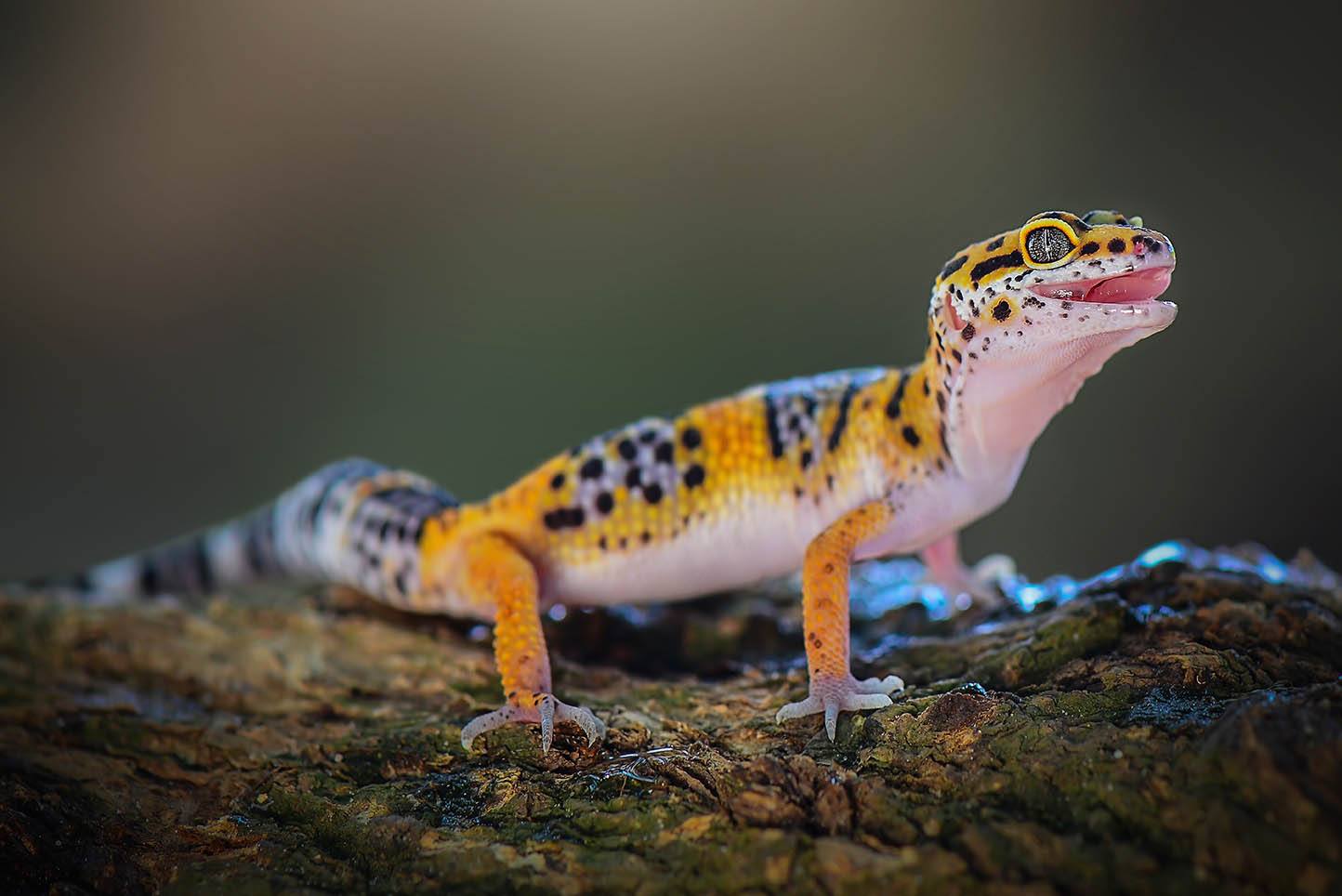
When caring for any pet, including exotic species, it’s essential to be aware of the primary signs of good health and illness. If you own a leopard gecko, keeping an eye on how often they poop can give you information about their overall well-being. Leopard geckos poop at different frequencies depending on their age, metabolism rate, and food intake.
This article will give you some general guidelines for how often your leopard gecko should be pooping. We’ll also talk about some of the reasons your leopard gecko might be pooping less frequently or not at all, including when to consult your exotic pet vet.
How Often Leopard Geckos Poop: General Guidelines
Young leopard geckos, both hatchlings and juveniles, tend to poop more frequently than adults. At this age, leopard geckos may poop as often as 2–3 times per day. To fuel rapid growth and development, young leopard geckos need to eat more than adults, resulting in more poop production as well.
Adult leopard geckos poop as often as once a day or only a few times per week. Again, their pooping frequency is primarily dependent on how often they eat. As adults, leopard geckos usually eat every other day.
If your leopard gecko goes more than a few days without pooping, there could be a problem.
Reasons Your Leopard Gecko Is Pooping Less Often
Not Eating Enough

If your leopard gecko’s appetite decreases, they’ll poop less often. Young leopard geckos need 2–3 food items per day, while adults should be offered as much as they can eat in 10 minutes every other day.
Consult your exotic pet veterinarian if you’re concerned your leopard gecko isn’t eating enough. Loss of appetite could have many causes, and medical help is required to diagnose the issue.
Not Warm Enough

Leopard geckos need warm temperatures to help them digest their food properly. If their enclosure is too chilly, they may poop less often. Leopard gecko enclosures should have a daytime temperature between 78–85 degrees Fahrenheit. They should also have a warmer basking spot maintained at 86–90 degrees.
Night temperatures should remain fairly warm, between 72–75 degrees. A combination of under-tank heaters and heat lamps can be used. Use cage thermometers in both tank areas to ensure the temperature isn’t too high or too low.
Dehydration
If your leopard gecko doesn’t get enough water, it could become dehydrated, leading to fewer bowel movements. Keep the humidity level in the enclosure between 30-40% and provide access to a shallow water dish at all times. Misting the cage regularly also helps keep your leopard gecko adequately hydrated.
Impaction
Impaction is the most serious reason your leopard gecko might not be pooping enough. In this scenario, the gecko can’t poop because it has eaten foreign material that’s clogged up its digestive tract, blocking normal movement. Generally, this happens to leopard geckos with a sand substrate in their enclosures.
Sand is a poor choice in leopard gecko habitats for several reasons, including the danger of impaction. Newspaper, reptile carpet, or paper towels are all safe options. Besides sand, avoid any substrate with particles that could be eaten, including gravel and wood chips.
Suspect an impaction if your leopard gecko isn’t eating well, isn’t pooping, is lethargic, and has a bloated belly. Contact your veterinarian for advice.
Conclusion
Leopard geckos are popular exotic pets because they are generally easy to take care of, gentle, and fun to observe. Breeders enjoy getting creative with their leopard geckos, producing gorgeous “morphs.” Don’t be fooled by their small size, these geckos can live as long as 20 years. To properly care for your new leopard gecko, ensure you learn all you can about their health and needs, including how much poop you can expect to clean up!
Featured Image Credit: Reinhold-Leitner, Shutterstock



